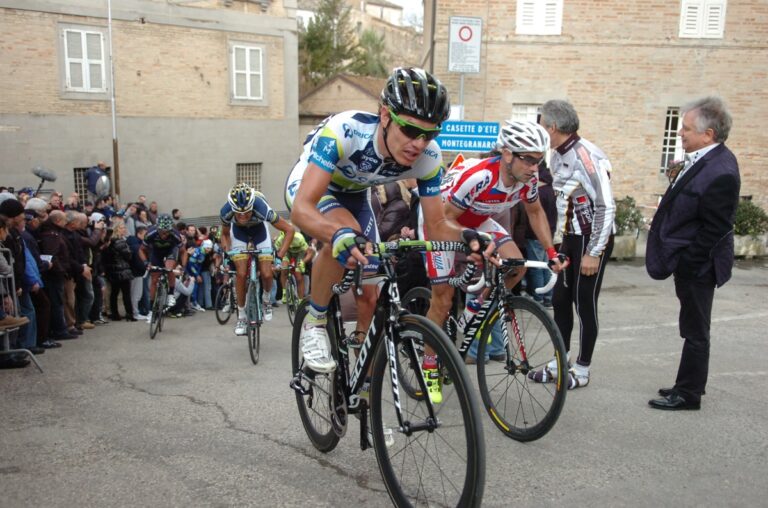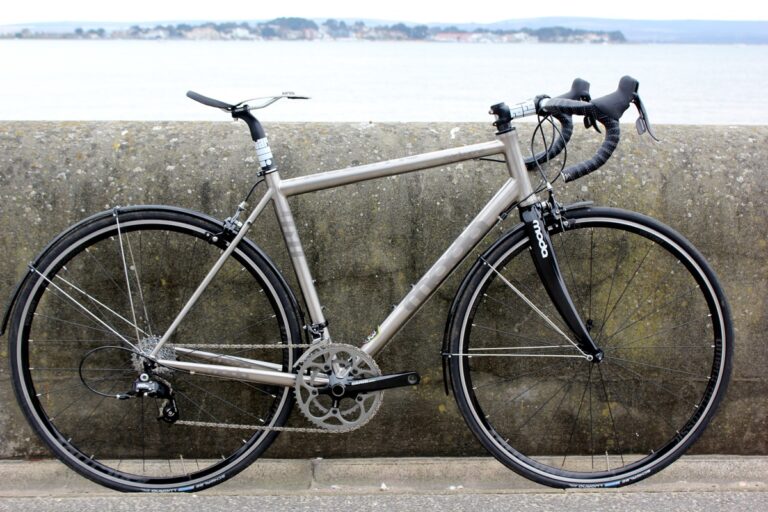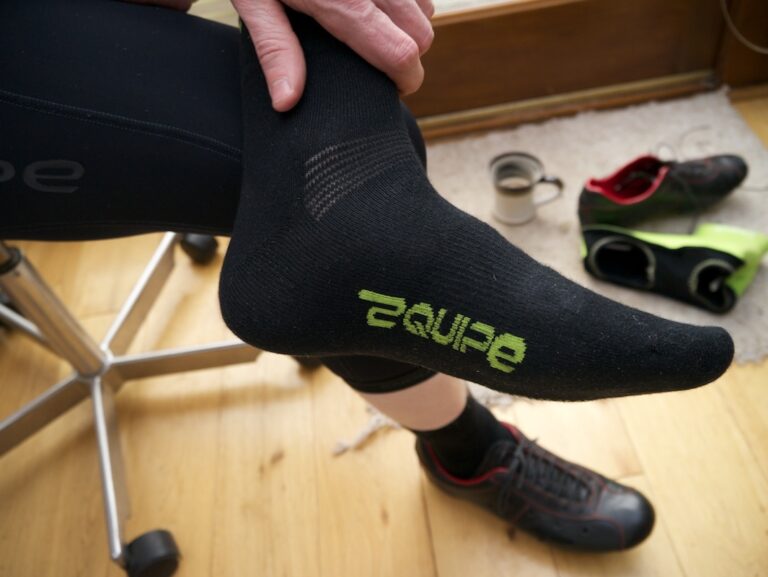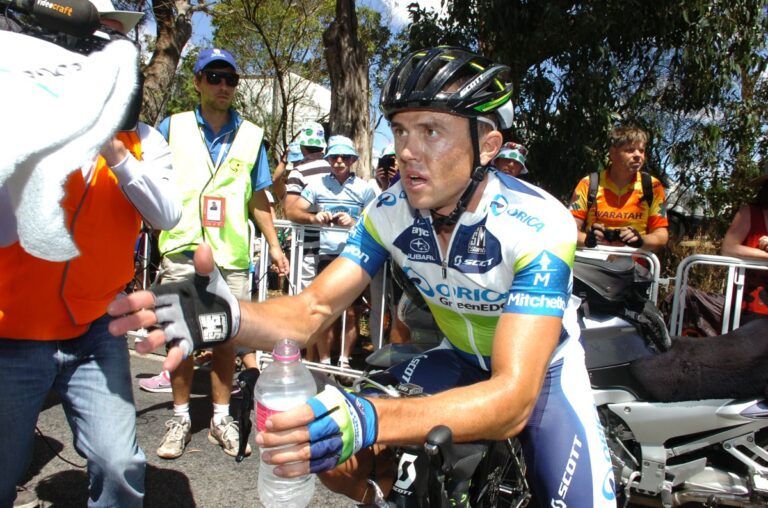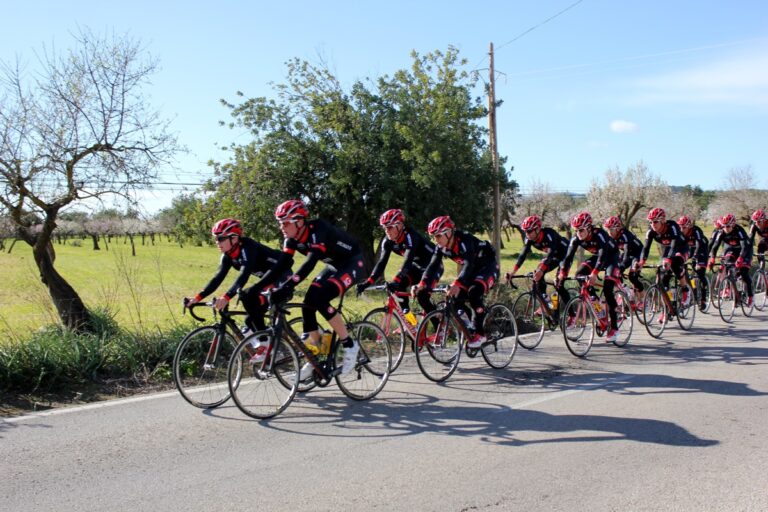We tend to work on developing fitness in a straight line, whether that is on the road or on the turbo indoors.
Sometimes we even seek out routes avoiding too many interruptions by way of corners so that our training is not disrupted by these annoying obstacles to our straight line progress.
However, obviously we need to be able to corner well in a real-life road situations and typically if you have the ability to corner well you can save time and energy that help you maintain your overall speed and stay with a group. Probably most notable though is that you will feel a lot less anxious and will conserve valuable muscle glycogen that might be wasted during unnecessary accelerations associated with poor cornering.
Going round the bend
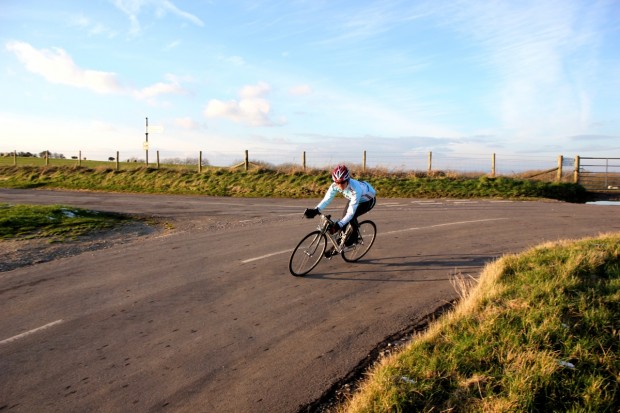
You will know if your cornering is not up to scratch. It can be frustrating. You may easily have the fitness to keep up with a group of riders but every time you come to a corner you lose ground and then have to make an extra effort to close gaps and keep up.
Remembering that cornering is a skill that you can work on and improve can help, but not as much as actually getting down to the business of applying your mind to the problem when you are out on your bike. As with all of the skills in this series, it makes sense to work on them on your own as much as you can first, then in small groups, and then in larger groups and on the day of your bigger events.
Body position
Cornering requires more bike control than riding on the flat. You want to be able to change direction with precision but feel stable and connected to the ground at the same time. Getting your body lower and more over the front of your bike drops your centre of gravity lower and gives you more weight and control over the steering at the front end of your bike. The drops is the place for your hands to be when cornering, with your arms relaxed and bent acting as a suspension system able to absorb easily any changes in road surface.
Relaxation
If you are not so good at cornering it is easy to tense up on the approach. Anxiety can make a mess of all your best laid plans so be patient with yourself and actively tell yourself to relax, using your body position to remind you to ‘drop into’ the corner. It can even help to focus on taking a deep breath in as you approach the corner and breathe out as you go around it. If you are tense, chances are you are holding your breath and straightening your arms which both make for poor cornering.
Choosing your line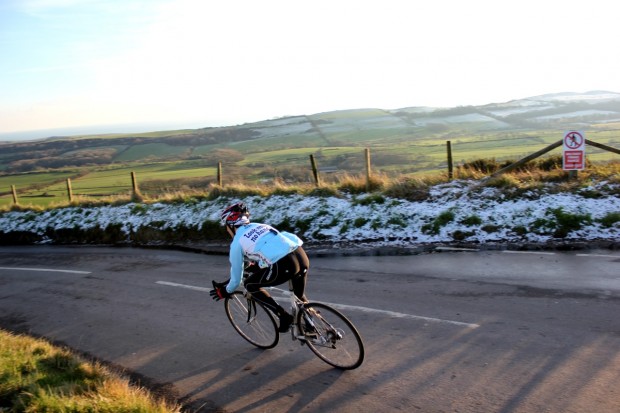
Most of us understand that we need to ‘cut’ the corner if we can by taking a racier line rather than just following the kerb around the bend. For most of us most of the time applying this principle moderately and being aware of traffic is a sensible way to start to improve your skills and maintain your speed round the corner without taking unnecessary risks. If you are lucky enough to get onto some more traffic free open roads, you might then be able to test your skill a little further.
The approach
As you approach the corner make a judgement based on your exit as well as your entry into it. Consider the line you want to take coming out and adjust your entry position and speed accordingly. Don’t make any sudden change in direction (such as swinging out wide only to swing back in again) but smoothly move into the road slightly if it is safe to do so, to give you more room to go at it.
Adjust your speed before you get to the corner so that you release your breaks as you go around it. If you are on the drops (for better control) you are in the best position to cover and feather your brakes smoothly, but it’s best not to get in the habit of pulling the breaks actually on the bend as in wet or changeable road conditions you are more likely to slip and slide and lose control of the bike.
It is a good idea to change down one or two gears on the approach to a corner too, as you are obviously going to lose some speed and you want to be ready to accelerate out the other side. If you don’t change down, you will make heavy weather of the exit and could lose contact with other riders in a group situation.
On the apex
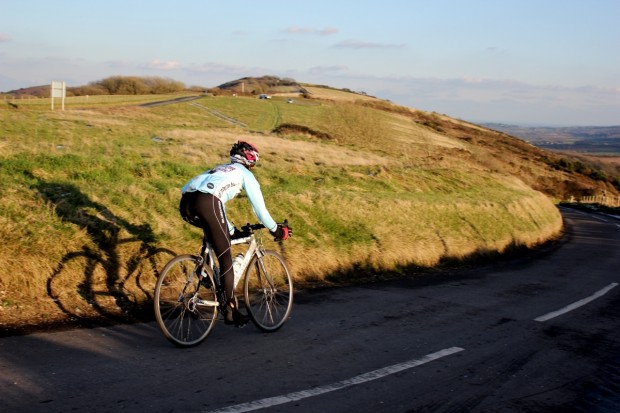
As you cross the apex of the bend or are riding through it, you should have your outside leg at the bottom of the pedal stroke and your inside leg at the top, so that it does not scrape the ground. It can also help to drop and lower your inside shoulder a little to help you stay low and tight to the inside. Your body should lean with the bike (not hang outside of it as you would see in motor sport) and you should focus your gaze on your exit line and stay relaxed.
Exiting
As you come out of the bend and your bike begins to straighten up, start to pedal as soon as you can safely do so, and if necessary a short sprint out of the saddle for a handful or revs can help you maintain as much speed as possible out of the bend. Hopefully, you should be in the right gear to do this comfortably.
Adding riders – added complications
As you begin to corner within smaller and then larger groups, it may be harder to isolate each of these elements but the same principles apply. The most important thing with any skill in a group is to have that added awareness and consideration for those around you. You have to take the line as a group and this may change it slightly. You may not even be able to see the corner as you approach so you will have to trust those around you and read the clues from riders ahead of you and at your sides.
Respond to a slowing group that is freewheeling by getting on the drops and changing down a gear or two in anticipation of a corner even if you can’t see it yet. Use your peripheral vision to allow space for riders on your inside and outside and avoid ‘cutting up’ riders on your inside especially, they will only be more likely to take you off if you make them nervous. Try to hold your position in the group, albeit with a possible ‘filing out’ into a slimmer line where there should be a natural and relaxed re-ordering.
Recap/revision
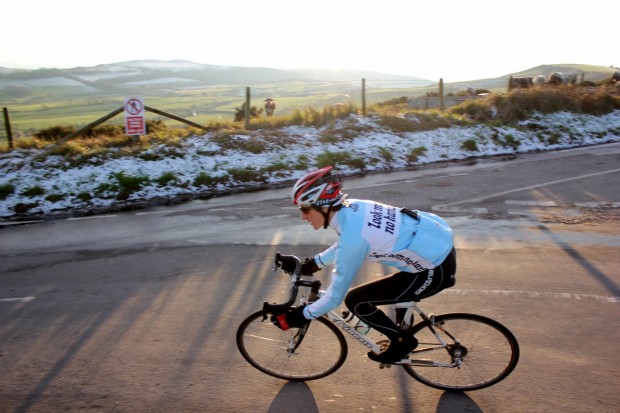
It is well worth doing a little self-analysis on your next few rides on each of these elements of your cornering. You may find that you naturally do all of these things without thinking too much, or you might find a reason for why you have been struggling. Either way it will help focus your mind on improved performance.

